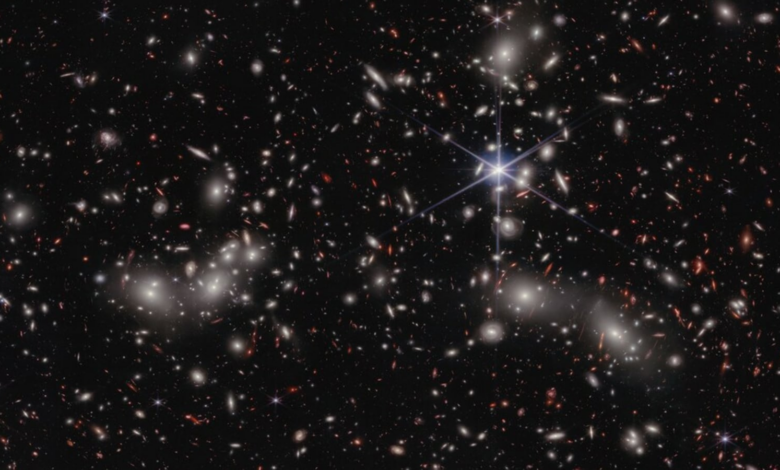NASA’s James Webb Telescope again exceeds expectations, capturing the Pandora cluster in detail

NASA’s James Webb Space Telescope has shared another surprising view of a celestial body. The James Webb Telescope has captured the region in space identified as the Pandora Cluster (Abell 2744), showing that three already very large galaxy clusters converge to create one supermassive cluster. This combined mass creates a strong gravitational lensing, a natural effect of gravity that amplifies the ability to observe galaxies in the early universe located far away from the cluster by using it as a magnifying glass.
Before that, NASA Hubble Space Telescope only captures Pandora’s central core. Thanks to the excellent and powerful infrared instruments combined with the Webb telescope’s wide mosaic view of many lens areas, astronomers are able to strike a balance between breadth and depth to study cosmology and galaxy evolution.
“When the images of the Pandora Cluster first arrived from Webb, we were really surprised. There was so much detail in the foreground cluster and so many distant galaxies that were lensed, I found myself lost in the image. Webb exceeded our expectations,” a NASA blog quotes astronomer Rachel Bezanson of the University of Pittsburgh in Pennsylvania.
Webb’s new view of the Pandora Cluster stitches 4 snapshots together into one panorama, showing 3 separate galaxy clusters merging into one large cluster and about 50,000 near-infrared sources.
technology behind James Webb . Space Telescope Pandora image captured
The researchers used Webb’s Near Infrared Camera (NIRCam) to capture the cluster by making exposures lasting from 4 to 6 hours, resulting in a total observation time of about 30 hours. The team then analyzed the image data to select specific galaxies for further observations with the Near Infrared Spectrometer (NIRSpec), which allows for precise distance measurements and provides detailed information about the composition of the galaxy. galaxies are lensed. It provides new insights into the early stages of galaxy assembly and evolution.
“Image mosaics and source catalogs on the Pandora Cluster (Abell 2744) provided by the UNCOVER team combine publicly available Hubble data with Webb photometrics from three original observation programs: JWST-GO-2561, JWST -DD-ERS-1324 and JWST -DD-2756,” NASA said in a blog.




